Physical Address
304 North Cardinal St.
Dorchester Center, MA 02124
Physical Address
304 North Cardinal St.
Dorchester Center, MA 02124
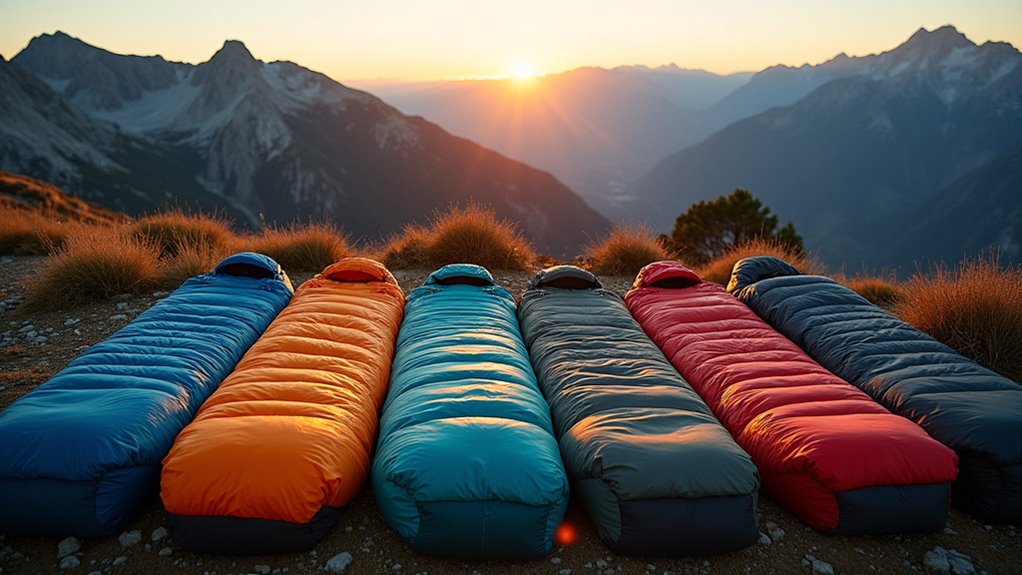
Avoid freezing on your next camping trip by discovering which sleeping bag matches your adventure style and outdoor conditions.
While a sleeping bag might seem like a simple camping purchase, it’s actually one of your most critical gear decisions for outdoor comfort. You’ll need to weigh several key factors before investing in your next bag, including insulation type, temperature rating, and overall design. Whether you’re planning weekend car camping trips or extended backcountry adventures, understanding the essentials will help you avoid costly mistakes and guarantee you’ve got the right bag for your specific needs.
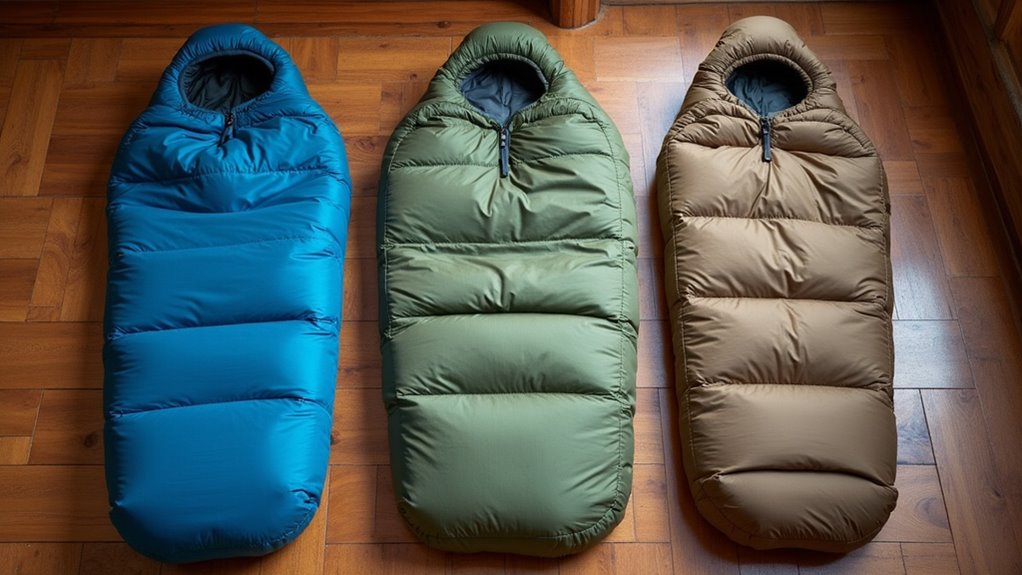
When selecting a sleeping bag for your camping adventures, understanding the different types available will help you make a smart investment that matches your needs.
You’ll find two main types of insulation: down and synthetic. Down offers superior warmth-to-weight ratio and compresses easily, making it perfect for backpacking, but it’s pricier and loses effectiveness when wet. Down insulation options are now available with RDS or TDS certification. Plus, down sleeping bags can be classified by their fill power, which indicates the quality and loft of the down.
Synthetic insulation costs less and performs better in damp conditions, though it’s bulkier.
You’ll also need to choose between three main shapes. Rectangular bags give you the most room and work well for car camping. Mummy bags keep you warmer with their snug fit and hood, ideal for backpacking. Semi-rectangular bags offer a middle ground, combining decent warmth with extra space for comfort.
What makes a sleeping bag truly worth your money? Look for features that maximize warmth, comfort, and durability. A mummy shape offers better thermal efficiency, while a semi-rectangular design balances warmth with movement space.
You’ll want a snug-fitting hood with drawcords since most heat escapes through your head. For backpacking, prioritize lightweight bags with down insulation that compress easily.
Don’t overlook draft collars and zipper baffles – they’re essential for preventing heat loss. Two-way zippers give you ventilation control, while stash pockets keep essentials handy. Choose a bag rated below average lows for your camping destination to ensure comfortable nights.
If you’re camping in damp conditions, choose water-resistant shells over cotton linings. Consider sleeping pad compatibility through loops or sleeves to boost ground insulation.
Quality materials matter – fine nylon or polyester shells with durable coatings will extend your bag’s lifespan and protect your investment.
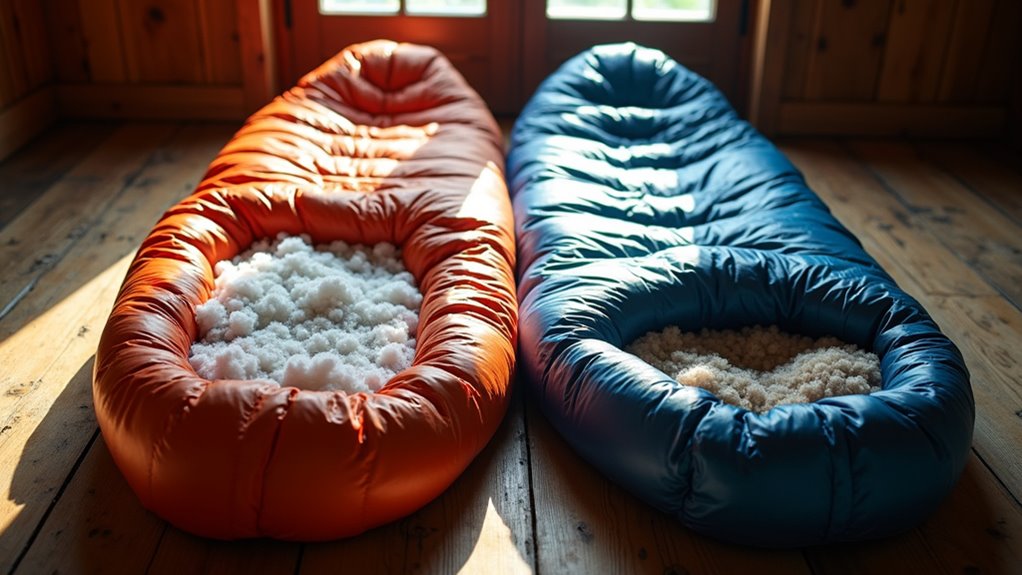
The choice between down and synthetic insulation serves as one of the most significant decisions you’ll make when selecting a sleeping bag. Each type offers distinct advantages, and your choice should align with your specific needs, environment, and budget.
Understanding sleeping bag temperature ratings can save you from shivering through the night or overspending on more insulation than you need.
Bags feature three key ratings: Comfort (for women), Limit (for men), and Extreme (for survival only). Don’t rely on the Extreme rating for regular camping. Independent labs now conduct standardized testing procedures to determine these ratings accurately.
For most three-season camping, look for comfort ratings between 0°C and 10°C (32°F-50°F). If you’re camping in summer, a bag rated 10°C-15°C (50°F-59°F) will suffice. Winter camping requires comfort ratings below 0°C (32°F). Essential Sleeping Bags for your next outdoor adventure can ensure you stay warm and comfortable.
Remember that these ratings assume you’re using an insulated sleeping pad with appropriate R-value. You’ll also want to take into account your personal temperature preferences – if you sleep cold, choose a bag with a lower comfort rating than the expected nighttime temperature.
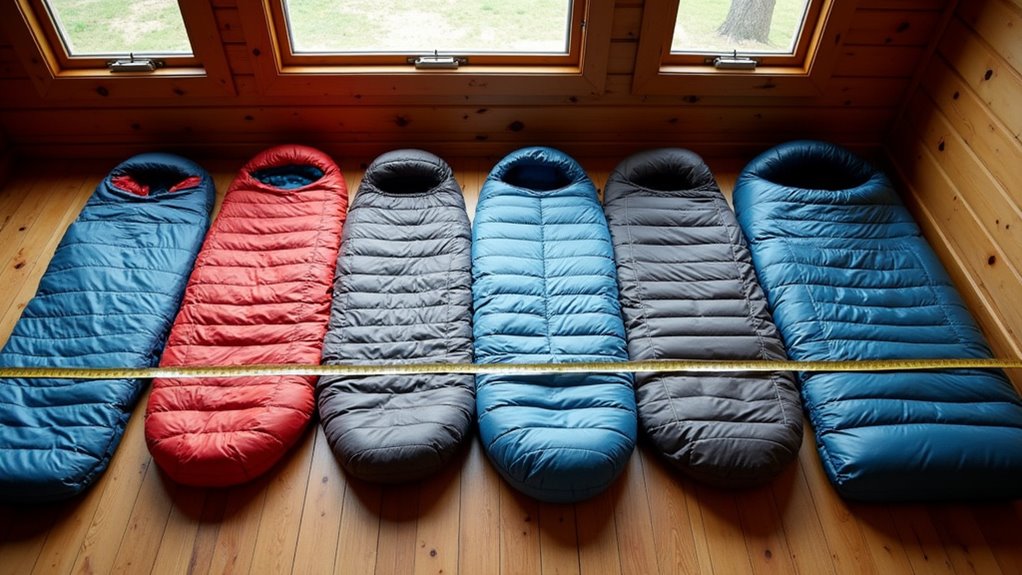
When selecting a sleeping bag, shape and size play just as essential a role as temperature ratings in your comfort and warmth.
You’ll find several shapes available, from roomy rectangular bags to snug mummy designs, each with distinct advantages. Rectangular bags offer maximum movement but less warmth, while mummy bags provide superior heat retention but restricted space. For a middle-ground option, consider semi-rectangular bags that balance comfort with thermal efficiency. Just like shoe sizes, bag dimensions vary between manufacturers, so trying different options is important. Camping mats can also provide additional comfort and insulation when used in conjunction with a sleeping bag.
Semi-rectangular sleeping bags strike an ideal balance, offering both comfort and warmth without the extremes of other designs.
Since camping gear can represent a significant investment, knowing which brands offer the best value at different price points will help you make an informed decision.
You’ll find budget-friendly options from Kelty in the $100-$200 range, while mid-range bags from Mountain Hardwear cost between $200-$400. For premium performance, consider Western Mountaineering or Feathered Friends, though you’ll pay $400 or more.
The price differences reflect key features like insulation quality, with premium bags using high-fill down (850-950), advanced fabric technologies, and specialized sizing options. Testing shows that bags with 900+ fill power provide exceptional warmth-to-weight performance. Essential camping gear is important to consider when selecting the right sleeping bag for your needs.
If you’re an occasional camper, Kelty’s Cosmic Ultra 20 offers good value. However, if you’re serious about backpacking, investing in REI Co-op’s Magma 15 or Mountain Hardwear’s Phantom 0 will give you superior performance and durability.
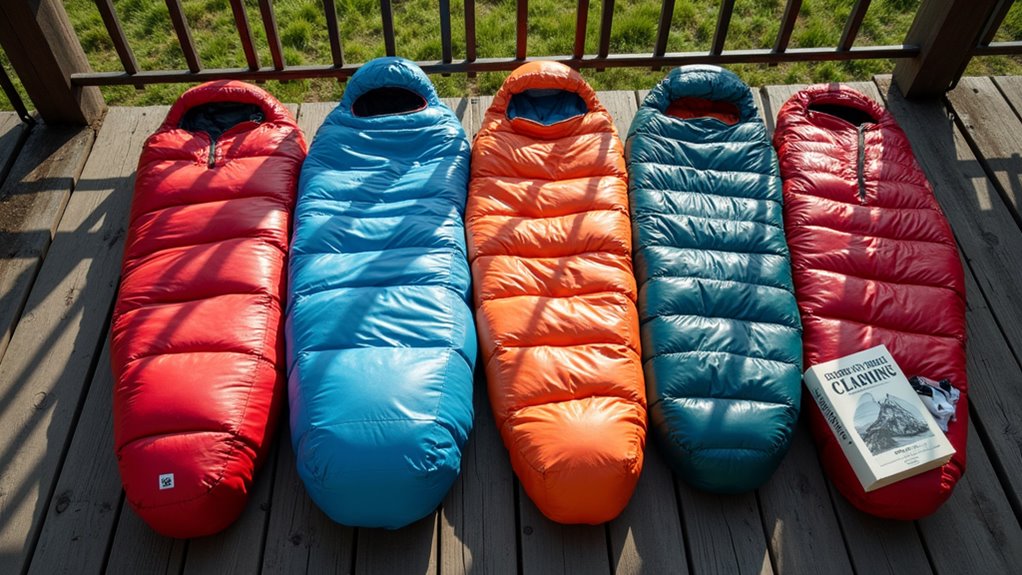
Proper care of your sleeping bag can greatly extend its lifespan and maintain its performance, regardless of how much you’ve invested in it.
You should aim to focus on regular maintenance and proper cleaning techniques to keep your bag in top condition. For serious damage or repairs, consider using professional repair services. Use mild soap or down-specific cleaners, and avoid harsh detergents that can damage the insulation.
Whether you’re hand washing in a bathtub or using a commercial washer, always use warm water and a gentle cycle. Essential camping gear can help ensure your sleeping bag stays in top shape.
The way you pack and store your sleeping bag directly impacts its longevity and performance. When backpacking, use a compression sack but don’t over-tighten it, as this can damage the insulation. Body oils and sweat can degrade insulation if not cleaned periodically.
Once you’re home, immediately remove the bag from compression and air it out in a well-ventilated space. Essential camping gear should be properly maintained to ensure their effectiveness.
For storage, you should aim to keep your bag loose, either hanging or in a large cotton or mesh storage sack – a 90L size works well. Never store your sleeping bag in a plastic bag or compression sack long-term. Choose a cool, dry location away from direct sunlight and temperature fluctuations.
If you live in a humid area, consider using desiccants to prevent moisture damage. Remember to regularly inspect your bag for wear and tear during storage.
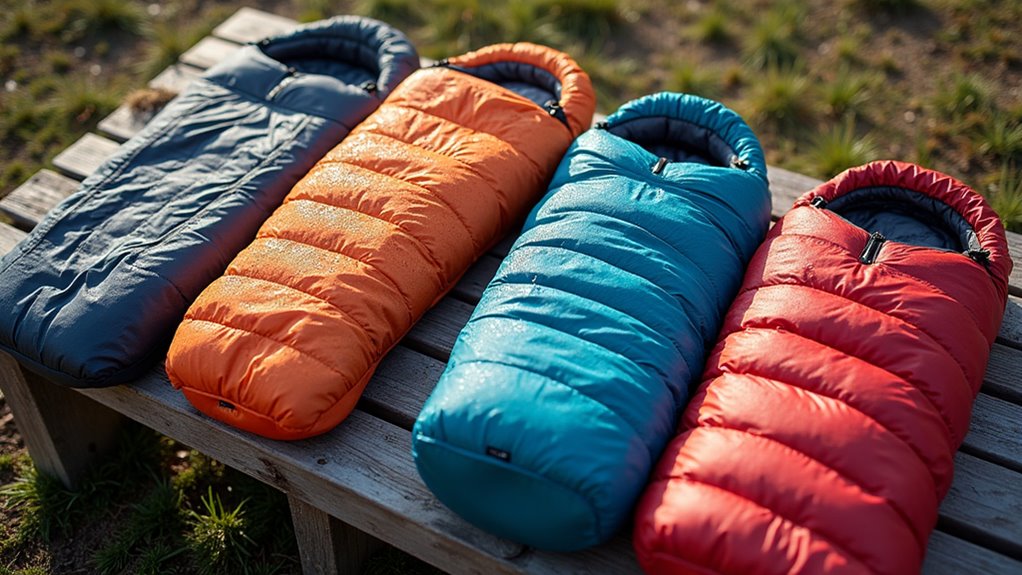
While storing your sleeping bag correctly protects its long-term condition, understanding weather resistance and durability factors helps you select the right bag for your outdoor adventures.
You should aim to take into account both weather protection and long-term durability when investing in a sleeping bag, as these factors considerably impact its performance and lifespan. Using a bag below its extreme rating can be dangerous and is not recommended for regular camping use. Essential safety gear should also be considered when choosing a sleeping bag.
You’ll find that investing in the right sleeping bag is essential for camping success, with studies showing that 68% of campers rank sleep quality as their top concern. Whether you’re choosing a $50 entry-level synthetic bag or a premium $300 down model, focus on matching the temperature rating to your needs. Remember to store your bag properly and clean it regularly—these simple steps will extend its life and protect your investment.